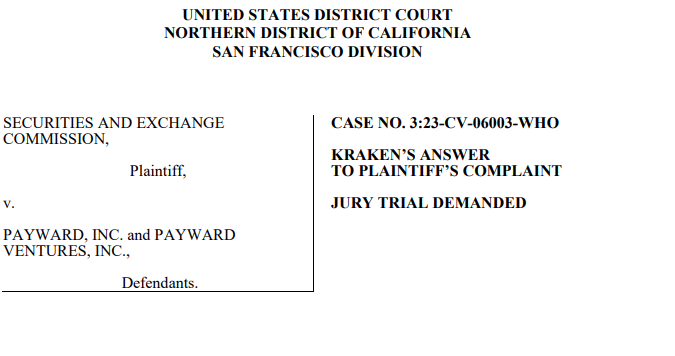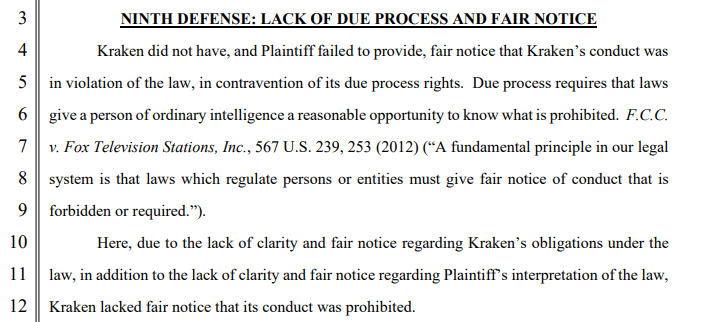Cryptocurrency exchange Kraken has pushed back against the U.S. Securities and Exchange Commission’s (SEC) claims that it broke federal securities laws. Specifically, the SEC argues that Kraken should consider several of the digital assets it offers as unregistered securities.
In the legal filing response, Kraken strongly denies the accusations, stating that these assets don’t meet the criteria for being classified as securities under U.S. law. Kraken’s defense stated that digital assets like Algorand (ALGO), Cosmos (ATOM), and Cardano (ADA), along with others traded on the platform, should not be considered investment contracts.

According to Kraken, the exchange did not violate Sections 5, 15(a), and 17A of the Securities Exchange Act of 1934 because these assets, FLOW, ALGO, ATOM, ADA, FIL, MANA, SOL, MATIC, NEAR, ICP, and OMG, are not classified as securities or investment contracts.
Ripple, Coinbase mock SEC’s policy
In its filing, Kraken refers to the SEC v. W.J. Howey Co. case, a significant Supreme Court decision that helps define what qualifies as an investment contract. Additionally, Kraken said that the SEC hasn’t proven that the digital assets in question meet the requirements of the Howey test, which means they shouldn’t be subject to SEC oversight.

Moreover, Kraken pushed back against the SEC’s broader approach to regulating the crypto space, criticizing how the agency is handling the industry. Ripple and Coinbase argue that the SEC has gone beyond its legal powers and that its stance on digital assets is unclear.
Consequently, Stuart Alderoty from Ripple and Paul Grewal from Coinbase have openly criticized the SEC for what they see as inconsistent behavior by the agency. Alderoty ridiculed the SEC for its stance on “crypto asset securities,” calling it a term the agency seemingly made up in a confusing web of contradictions.
Moreover, Grewal took aim at the SEC for its accusations against XRP, pointing out that in its 2020 lawsuit against Ripple, the SEC actually labeled XRP itself as a security.
Related | Vitalik Buterin outlines future of layer-2 scaling







